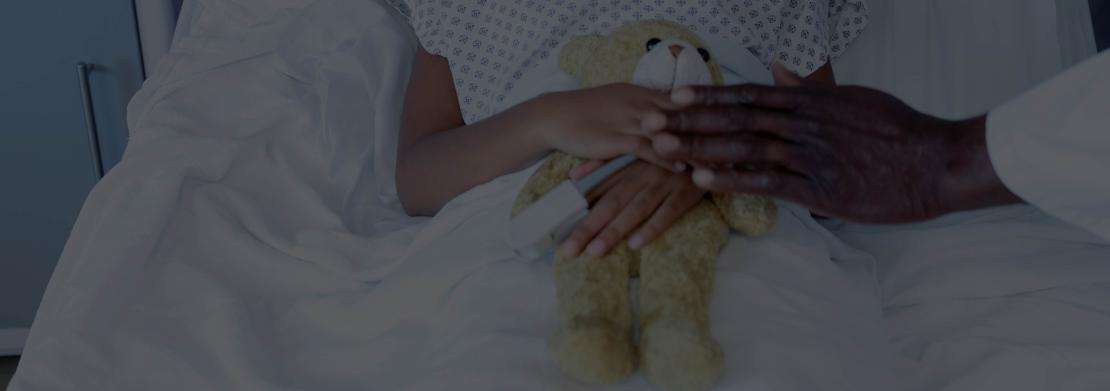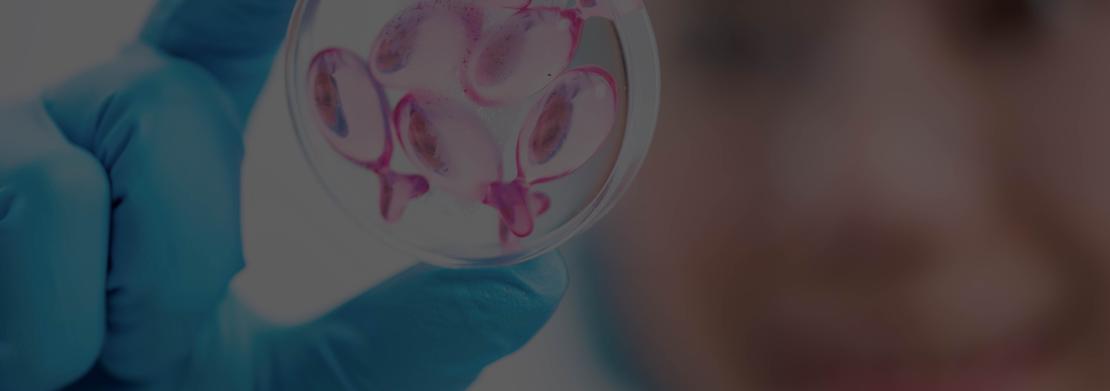"85% Success in Childhood Leukemia: Hope and Science Hand in Hand"
During the Leukemia Children’s Week, held from November 2-8, Assoc. Prof. Dr. Mustafa Kale, a faculty member in the Department of Child Development at the Faculty of Health Sciences at Cyprus International University (CIU), highlighted the significance of leukemia as the most common type of cancer in childhood. He pointed out that leukemia accounts for approximately 30% of all childhood cancers and that every year, an average of 3-4 children per 100,000 are diagnosed with leukemia. Dr. Kale stated, “When leukemia is detected early and supported with appropriate treatment, a large majority of children can recover.” He further added that the success rate of leukemia treatment has now exceeded 85%, emphasizing that "medical treatment, as well as the psychological support of the child and the conscious cooperation of the family, play a crucial role."
"Today, the psychological well-being of the child is an integral part of treatment. Psychosocial support such as play therapy, art activities, and family counseling directly influences the child's recovery process," Dr. Kale remarked. He also noted that "With early diagnosis and appropriate treatment, around 85% of children with leukemia can fully recover. Therefore, we now see leukemia not just as an illness but as a shared journey of recovery."
Dr. Kale went on to describe the faculty's educational approach, stating, “At the Faculty of Health Sciences, Department of Child Development, we train our students not only in the classroom but also through active practice in hospitals and specialized child care settings. Our courses include special content such as 'Child and Family Support in Hospital Settings,' 'Psychosocial Development and Play Therapy,' and 'Communication with Children During Crisis and Grief.'"
Dr. Kale also emphasized that conscious observation and timely intervention are the strongest weapons in the fight against leukemia, stating, “It is essential for families to be vigilant, and for teachers to recognize any physical or behavioral changes in children, enabling early referral to healthcare professionals.”

1. What is Leukemia? How frequently does it occur in children?
Leukemia is a blood disease that starts in the bone marrow, where blood cells are produced. Simply put, it is the production of an excessive number of abnormal white blood cells (leukocytes) instead of normal blood cells. Since these cells replace healthy ones, the body’s basic functions, such as fighting infections, stopping bleeding, and carrying oxygen, are impaired.
Leukemia is the most common type of cancer in childhood, accounting for about 30% of all childhood cancers. The most common type is Acute Lymphoblastic Leukemia (ALL), which is more frequently seen in children aged 2-5 years. Every year, an average of 3-4 children per 100,000 are diagnosed with leukemia. If leukemia is detected early and treated appropriately, a large percentage of children can recover. Today, the treatment success rate has risen above 85%. In this process, medical treatment, the child’s psychological support, and the family’s active cooperation are all crucial elements.
2. How does the treatment process progress for children with leukemia? What advancements have been made in treatment methods today?
For children with leukemia, treatment has become a journey of hope. The first day after a leukemia diagnosis is often one of the hardest in a child and family’s life. However, today leukemia is no longer the feared disease it once was. Treatment plans are tailored based on the child’s age, the type and spread of the leukemia. The process generally follows a three-stage treatment plan:
• The first stage is called the "induction phase," where the goal is to rapidly reduce the cancerous cells in the bone marrow. The child typically stays in the hospital and undergoes chemotherapy.
• The second phase is called "consolidation," where any remaining hidden cancer cells are targeted.
• The final phase is the "maintenance phase," which can last 2-3 years, but the child can usually return home and only needs regular check-ups.
Advances in medical technology, particularly in the field of oncology, have improved treatment methods. For example, chemotherapy used to be the standard, but now treatments are much more precise. "Targeted therapies" now destroy only leukemia cells, leaving healthy cells unharmed. Through "immunotherapy," the child’s own immune system is able to identify and fight cancer cells. In some cases, "stem cell or bone marrow transplants" have proven to be promising.
However, Dr. Kale stressed that treatment is not just medical. "Today, the child’s psychological well-being is an inseparable part of treatment. Psychosocial support, such as play therapy, art activities, and family counseling, directly impacts the recovery process," he emphasized.
Child development and health experts are often asked if leukemia is treatable. The answer is absolutely yes. With early diagnosis and appropriate treatment, around 85% of children with leukemia can fully recover. "Therefore, we now see leukemia not just as an illness, but as a shared journey of recovery," Dr. Kale stated.
3. Why is the approach of families and the environment toward the child so important during the treatment process?
When a child is receiving treatment in the hospital, not only their body, but also their emotions, are at battle. In the case of long-term illnesses like leukemia, maintaining the child’s morale directly influences the outcome of treatment. Fear, anxiety, or feelings of loneliness can even weaken the immune system.
Therefore, the family is the child's biggest source of security. Having the parents by their side, displaying a calm and hopeful attitude, gives the child a sense of "I am safe." This sense of security strengthens treatment adherence and psychological resilience.
In addition to the family, the support of the surrounding environment – particularly relatives, teachers, and friends – is invaluable. Some children may feel "different" due to hair loss, weight changes, or being absent from school during the illness. Here, an empathetic approach from their environment is crucial. A friend saying, "You are strong, we miss you," rather than "You are sick," can help rebuild the child’s self-esteem.

4. What psychological support do you recommend? What role do child development specialists play in this area?
It’s more accurate to refer to it as psychosocial support. Being diagnosed with leukemia is incredibly challenging for both the child and their family, especially during such a vulnerable time. Psychosocial support is essential throughout the treatment process for both the child and the family. Child development specialists, psychologists, and social workers in hospitals play a significant role here.
Through play therapy, art activities, storytelling, and group activities, the child can express their emotions. For families, psychological counseling and support groups help reduce feelings of anxiety and burnout. It’s important to remember that a child heals not just with medicine, but with love, understanding, and the power of hope. The warmth of the family, the sensitivity of the surrounding environment, and professional support combine to form the most powerful part of the treatment.
For children undergoing leukemia treatment, the hospital is not just a medical setting but a place where emotional, cognitive, and social development is reshaped. This is where child development specialists intervene as professionals who enhance the child’s quality of life and rebuild hope and security.
At the Faculty of Health Sciences, Department of Child Development, we train our students to not only work in the classroom but to also gain hands-on experience in hospitals and specialized child care environments. Our courses include special content such as "Child and Family Support in Hospital Settings," "Psychosocial Development and Play Therapy," and "Communication with Children During Crisis and Grief." In these courses, students learn to understand the emotional needs of sick children and support them through play, art, and storytelling-based approaches.
A child development specialist working in a hospital environment provides emotional support through age-appropriate play and activities, helps the child cope with fear, anxiety, and loneliness, strengthens the parents' emotional resilience through communication, and works with the healthcare team to provide psychosocial assessments and developmental monitoring. Child development specialists care not only for the child’s "present" but also for their post-treatment quality of life. Because when a recovering child smiles confidently again, it is the success of both medicine and human-centered care.
At Cyprus International University, we aim to equip each student we train with the knowledge, sensitivity, and awareness necessary to hold the hand of a child in a hospital room. Before diagnosis, many families often overlook symptoms, mistakenly attributing them to “seasonal illness” or “fatigue.” However, small signs can carry significant meaning.
These include frequent unexplained fevers, easy bruising, bleeding or red spots (petechiae) with minor impacts, persistent fatigue, paleness, lack of interest in play, swelling in the lymph nodes (neck, armpits), gum bleeding, loss of appetite, weight loss, night sweats, and recurring infections (especially colds or throat infections). These symptoms can be confused with other illnesses, but if several occur together and are recurring, immediate consultation with a doctor is necessary. Early diagnosis not only changes the child's survival chances but also improves the quality of the treatment process. Early-detected leukemia may require a shorter treatment period, and chemotherapy responses are much more favorable. The strongest weapon in the fight against leukemia is conscious observation and timely intervention. Families being vigilant, and teachers noticing physical or behavioral changes in children, allows for early referrals to health professionals.
5. What is the most important message you want to convey to the community during Leukemia Children’s Week?
In my opinion, leukemia is not just a disease; it is a story of solidarity for a child, a family, and even society as a whole. This week reminds us of a fundamental truth: leukemia is a treatable illness, but morale and hope are also essential parts of the treatment. The strongest message we want to
convey to the community is: "Every child with leukemia deserves the same rights, love, and energy as their healthy peers. Their smile is a symbol of recovery and the continuation of life."
During this process, every part of society has a role to play:
• Families, by remaining strong for their children, help nurture the hope of recovery.
• Teachers and friends should see the child not as "different" but as "strong together."
• Healthcare professionals and child development specialists are the invisible heroes who protect their emotional and social development.
Let’s remember, leukemia is not contagious, but love is contagious. A smile, a supportive message, or an awareness campaign can change a child's motivation. As the Faculty of Health Sciences at Cyprus International University, we emphasize every Leukemia Children’s Week that early diagnosis, an informed society, strong families, and a hopeful outlook are the four most fundamental forces needed for a child to hold on to life again.